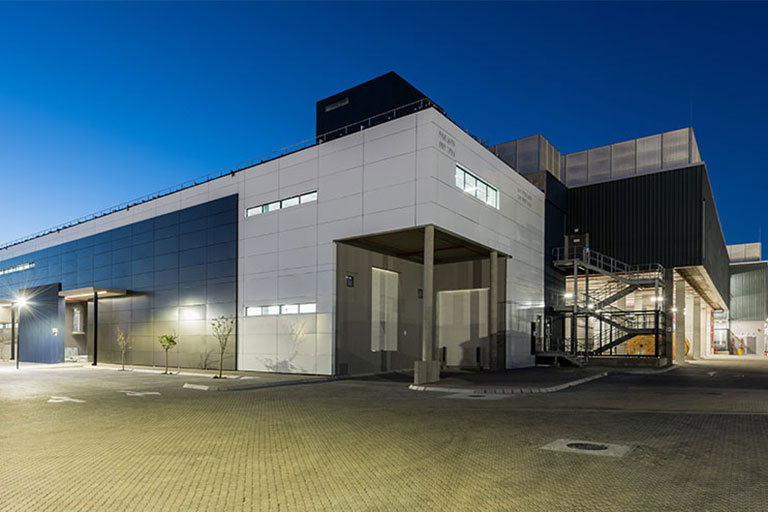A steel-built network of data centres is being constructed in Africa, revolutionising the continent’s internet speeds.
The majority of Africa’s data is currently stored outside the continent, passing back and forth through underwater cables that connect to Europe through southern France. This outsourcing of Africa’s data infrastructure has been holding back development across the region.
From share traders to healthcare professionals to video game players, the 180 milliseconds it can take data from Africa’s southern-most nations to complete the trip to Europe and back is an ongoing source of frustration.
Despite Africa having a greater number of internet users than America, its data centre capacity is comparable to that of Switzerland and demand continues to rise as more and more people begin to go online.
However, investment in data centres across the continent is bringing Africa’s internet up to speed and paving the way for a digital revolution, with capacity doubling since 2016 to roughly 250MW.
Power usage is the most commonly used measure of data capacity, but with many populations across Africa still to receive reliable internet access it is estimated that 1,200MW will be required by 2030.
Steeling the internet for the 21st century
With such a massive uptick in expected data storage needs, and the power needed to make it happen, it’s no surprise that Africa’s data centres are undergoing a boom in construction right now.
It is here that materials choice will play a key role in the success of Africa’s data revolution. Data centres must meet rigorous performance standards and must be built swiftly to keep pace with demand.
Precision manufactured structural steel framing allows for these buildings’ component parts to be manufactured offsite, massively reducing the build time without compromising on quality and durability.
These facilities must safely and reliably house the critical infrastructure underpinning the internet and rely heavily on steel for structural integrity and overall functionality.
Steel’s exceptional strength-to-weight ratio makes it an ideal material for creating sturdy, load-bearing structures
Steel’s exceptional strength-to-weight ratio makes it an ideal material for creating sturdy, load-bearing structures capable of supporting the massive weight of servers, networking equipment, and other hardware.
Additionally, steel offers flexibility in design, allowing for the creation of large open spaces and high ceilings necessary for efficient airflow and equipment installation.
Inside data centres, steel is used extensively in the fabrication of the server racks and cabinets that organise and house servers, switches, routers, and other delicate but heavy IT equipment.
Furthermore, steel is utilised in the construction of raised flooring systems which create space beneath the equipment for airflow, cabling, and cooling infrastructure, optimising energy efficiency and maintenance.
Steel also serves a crucial role in internet cables, providing reinforcement that protects the delicate optical fibres from tension and damage during installation and operation. This ensures that cabled can withstand the rigours of deployment, including bending, pulling, and crushing forces.
Additionally, steel is used in armouring cables, providing further protection against environmental hazards such as moisture and physical impact.
 The use of light steel framing in data centre construction allows for large airy spaces which support cooling
The use of light steel framing in data centre construction allows for large airy spaces which support cooling
The power of the internet
Data centres rely on multiple sources of electricity to power their operations, ensuring reliability and redundancy. They typically connect to the national power grid as the primary source of electricity.
In addition to grid power, data centres will run backup power systems such as uninterruptible power supplies (UPS) and diesel generators. UPS acts as a transitional power source, instantly providing electricity in case of grid failures or fluctuations, ensuring uninterrupted operation until backup generators kick in.
Data centres rely on these multiple steel-built power sources, ensuring high availability and reliability, minimising the risk of downtime and ensuring the uninterrupted operation of their data centres, even in the face of power disruptions or emergencies.
The importance of Africa having its own data centres lies in fostering regional digital sovereignty, reducing reliance on international infrastructure, and promoting economic development.
Locally situated data centres enhance the continent’s data security and privacy by keeping sensitive information within Africa’s borders. Moreover, they minimise latency and improve internet connectivity, benefiting businesses, governments, and individuals across the continent.
This steel-reliant, data infrastructure boom is creating opportunities for technology innovation, job creation, and skills development, contributing to the growth of the digital economy and enabling Africa to participate more effectively in the global information age.
Images: Teraco, Wikicommons